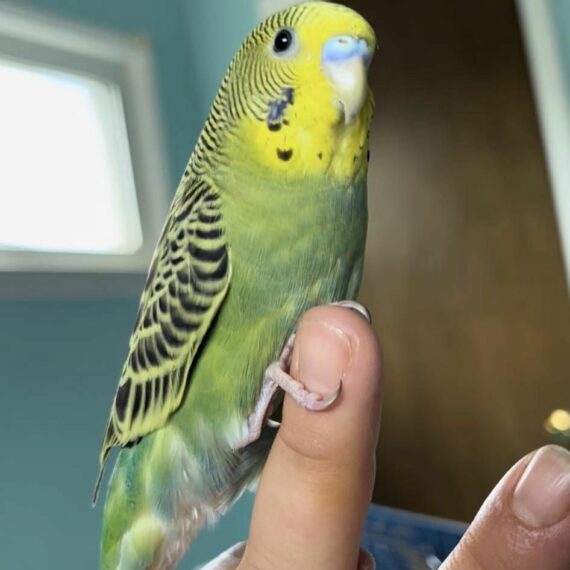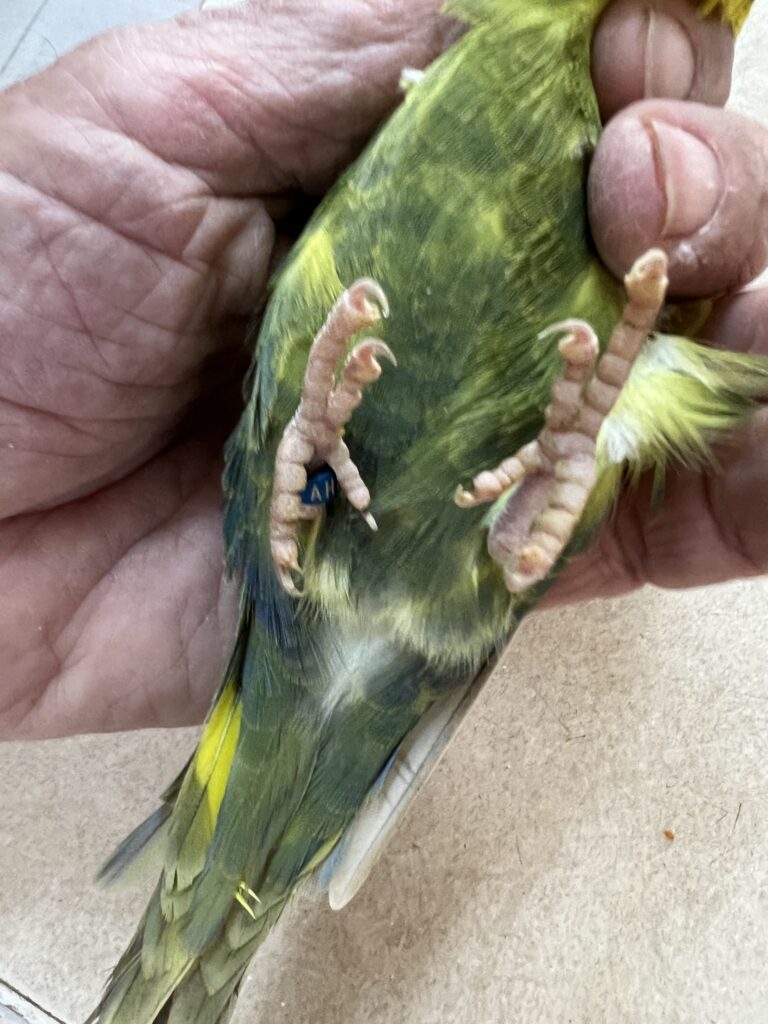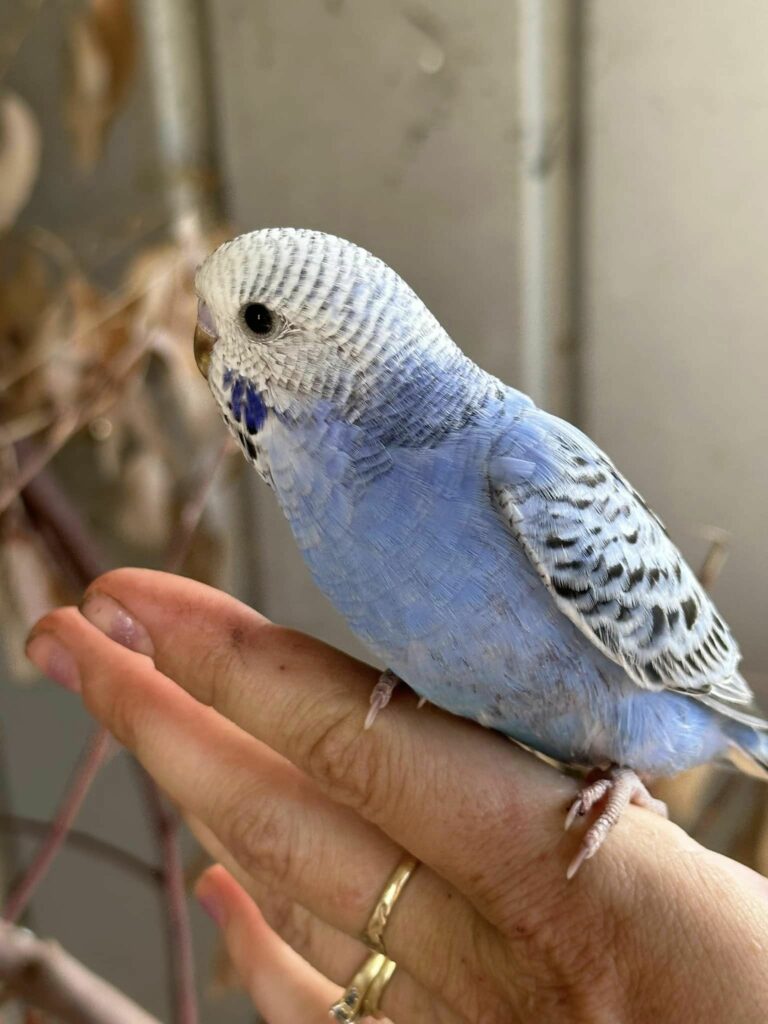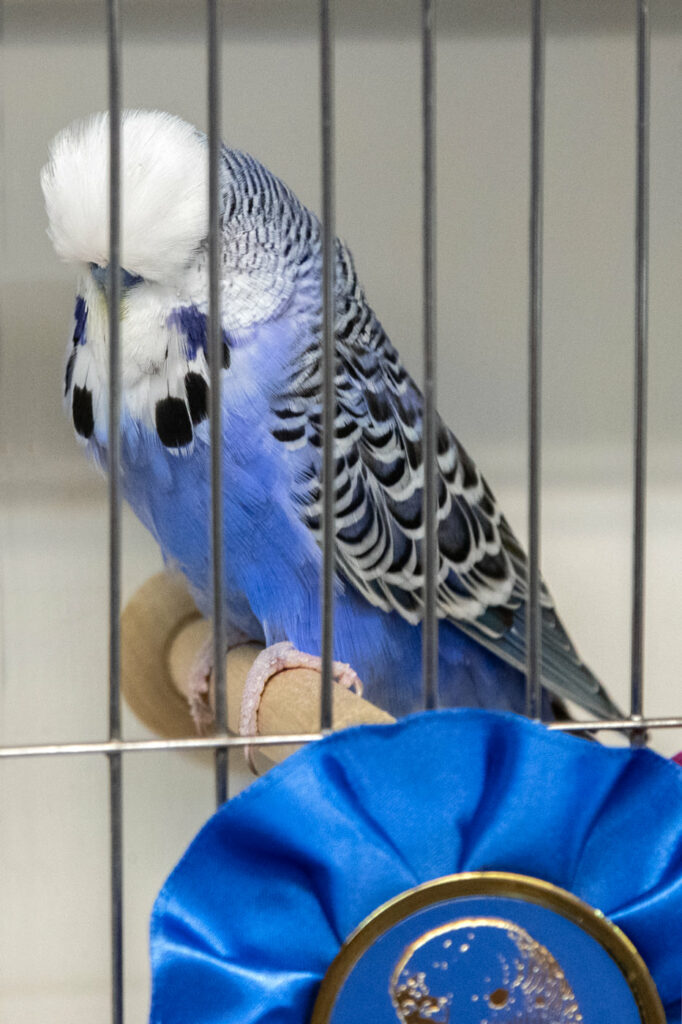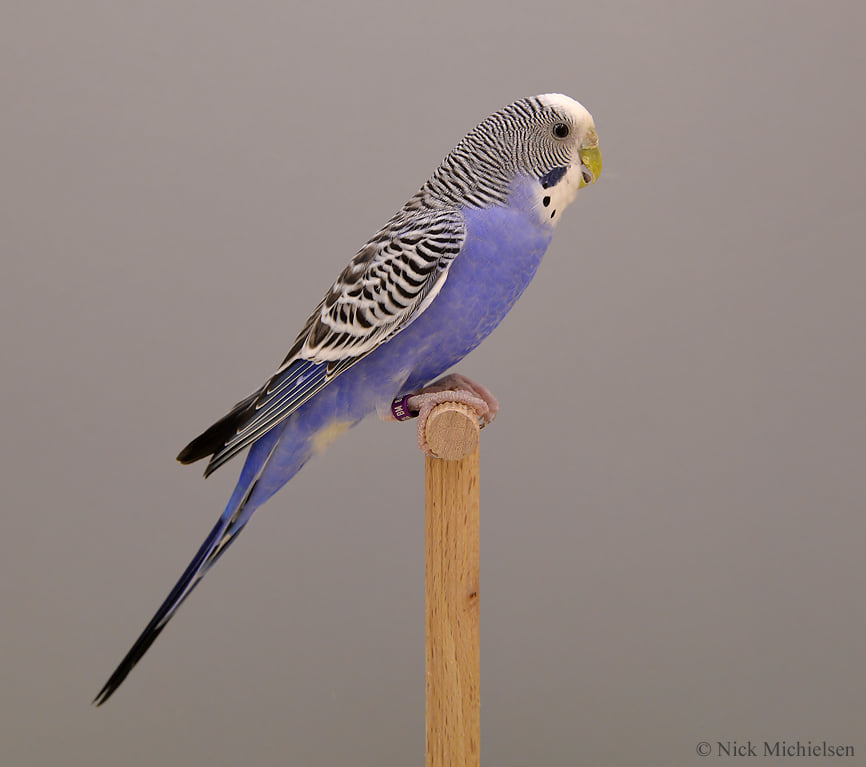This dominant mutation was first discovered in Australia in the 1930s, but likely existed for a long time as misidentified Dark Factor. It’s even possible that Violet originally came from wild-caught birds.
To the untrained eye, Violets are difficult to identify. In their regular forms, they appear identical to the Dark Factor level “above” them; Regular Violets (pictured first) look like Dark Greens and Dark Green Violets (pictured second) look like Olives. They also tend to have slightly bluer feathers towards their rump, tail, and lower belly.
Blue Violets aren’t quite as difficult. Sky Blue Violets (pictured third) have purple-ish blue feathers that make them look like a light Cobalt. Cobalt Violets (called Visual Violets, pictured fourth) are a slightly darker, saturated periwinkle. Finally, Mauve Violets are a dark lilac.
The coloration of each bird is always more intense on the rump and tail. Looking at these areas can help determine whether a violet is SF or DF violet – DFs having more purple/blue than SFs.
Lastly, with a lot of selective breeding, Mauve and Cobalt Violets have achieved especially purple coloration matched only by Red Violet in intensity. The colors displayed by these birds (pictured fifth) take breeders decades to produce.
